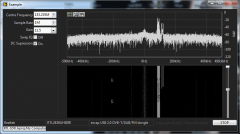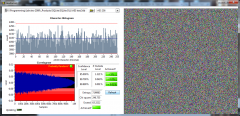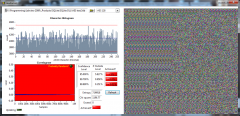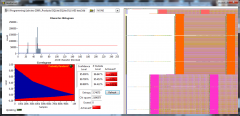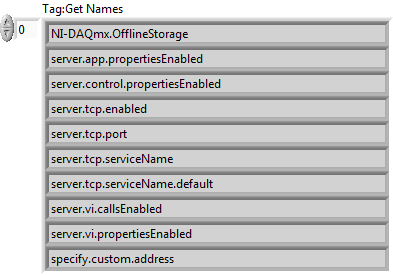-
Posts
4,988 -
Joined
-
Days Won
311
Content Type
Profiles
Forums
Downloads
Gallery
Everything posted by ShaunR
-
I'm not sure I'm understanding correctly. But could you not put all the data into a sqlite database and query using "group by" for display?
-
I'm not familiar with that Rohde and Schwarz product but I did previously work at Anritsu with their equivalent products as well as evaluating competitors products. Most devices are SCPI compliant across manufacturers and if you truly want to take advantage of different manufacturers' equipment I would suggest forgoing the specific LabVIEW drivers and cherry picking the SCPI commands to produce configuration and script recipes that work on common command sets. Most devices of this type already have inbuilt functions for most measurements and a quick look at the datasheet seems to show that they are present for CISPR 16, at least. That said. They are pretty standard kinds of measurement for RF equipment generally and the standards will mainly dictate setup and measurement tolerances. Creating recipes for tests with the raw SCPI commands will greatly simplify your code and performance will be dictated by the hardware. Many times a test boils down to a configuration that you can store in the device itself and just select a program number or name.
-
Hardly. It's like pitching your tent inside your house because you don't have a hammer for tent pegs. Sure, the tent is up. But now you have to move your entire house when you want to go camping! I get really annoyed with the Linux community who's only answer for any Windows issues is to install Linux (or Cygwin)..
-
-
I have a partition (F:\) that contains all my code (my whole disk, USB drives and SD card are Vera-crypted, so I'm even more paranoid than Rolph ). The top level of F:\ looks like this: F:\CB F:\CT F:\LV F:\MingW F:\PHP F:\ RUST F:\WEB F:\VS (CB=Codeblocks, CT:=Codetyphon, LV=LabVIEW, VS=Visual Studio) Under F:\LV I have the different LV versions: 2009 2010 2011 2012 2013 2014 2015 2016 2017 And each has the following structure Components Products Projects. Each project has an entry under "Projects" (duh! ) and all have the following structure API Bin Build Core Docs Examples Menus Test The project file and any dynamic libraries directly loaded sit at this level (F:\LV\<LabVIEW Version>\<Project Name>). The Bin directory will contain both 32 and 64 bit,libraries but the bitness that is worked with (usually 64 bit) will be here. From that point it gets more flexible and project specific. However. SVN plays an important role here since copies across versions are never copied from directory to directory. Instead they are checked out from SVN.
-
Does the R&S driver not do what you need?
-
I can also undo screws with a knife but I would prefer to use a screwdriver
- 30 replies
-

Data transfer strategies for FPGA-RT-Host
ShaunR replied to Max Joseph's topic in Application Design & Architecture
PCI = 33MHz x 4 bytes = 132 MB/s -
It's a good job that LabVIEW is a dataflow programming language then!
- 30 replies
-
Make sure your hard disk is up to the speeds you require. You can use these VIs to benchmark your disk.
-

Error accessing site when not logged in.
ShaunR replied to ShaunR's topic in Site Feedback & Support
Confirmed. Thanks. -
Yup. No ideal solutions for a fast, searchable time series database. The best I have used so far is SQLite. It can have 32k columns so does for most things I have to deal with. Inserting 32k into a row at a time isn't all that quick, though. 10k points is usually an acceptable trade-off for dumping graphs.
-
Locally, SQLite. Remotely, MySQL/MariaDB.
-

Error accessing site when not logged in.
ShaunR replied to ShaunR's topic in Site Feedback & Support
The problem is back again. Sorry, there is a problem Something went wrong. Please try again. Error code: EX145 -
Yes. that works. I've checked through the SVN log and nothing has changed in the code from the last time it was run (over a year ago) so I'm not sure why this happened unless the default project refnum no longer returns the root. Thanks for looking into it
-
I have a test harness that I haven't run for a while that uses the CCSymbols tag to lookup the conditional symbols of a project. It seems this no longer works and returns an empty variant. There is also a GetSymbols.vi located in "<LabVIEW Version>\resource\plugins\Utility\IfDef.llb" which also no longer functions and returns an empty array. I've executed GetSymbols.vi on LabVIEW versions 2009 through to 2017 and none of them work. (I'm pretty sure it uses the same property node). Investigating further, I have retrieved a list of tags and the only tags that seem to be available are these. I'm sure there were more than this and CCSymbols was among them. Can anyone confirm or deny this? Does anyone have an alternative way of getting the symbols?
-
It's the thing you point to when someone says they've found a bug
- 9 replies
-
- 1
-

-
- over budget
- over time
- (and 2 more)
-
I don't have a problem with that (the old saying the last 10% of a project is 90% of the work ). I just treat it as refactoring and optimization. It's the documentation that grinds me down - Help files,user manuals, application notes et.al.I'd rather have one Technical Author on a project than 2 extra programmers.
- 9 replies
-
- over budget
- over time
- (and 2 more)
-
You probably have javascript disabled or an addon blocking the javascript. 2 people have registered today so the site is working correctly.
-
There is this. I don't know what it is like but it may be a start.
-
This isn't really an issue with agile development-a project can last decades as long as the Product Owner keeps feeding the loop. It used to happen a lot with linear (e.g. waterfall) style projects but agile, with iterative development!, means you get concrete and tested software regularly throughout the life-cycle. That's good for merging changing requirements which keeps things fresh and interesting as well as no "oh god I hope it passes acceptance because there is only two weeks left" after months of work. I haven't used linear development for over a decade.
- 9 replies
-
- over budget
- over time
- (and 2 more)
-
Each executable is a "Single Process" so the variable is only relevant in that executable. The same with "Global Variables". You have two main options for sharing between processes. Network (TCPIP, UDP et.al) or memory mapped files..
-
For standard USB, the malicious code needs to be executed. People get caught out on Windows because they have autorun enabled. Turn that off and a program needs to be executed. Of course, if the malicious code is called "setup.exe" on an NI DVD/USB, you will run it. I've said before. The two things you should always do when getting anew PC is to turn off autorun and set the default operation for VBS scripts to "Open" rather than the default "execute". That defeats auto-infection by most malware even if it is present. To add to the horrors of USB, try Googling for BashBunny and LanTurtle. When a USB device proffers itself as an ethernet adapter it can take over DNS, download code, spy on all internet traffic, steal windows credentials and is immune to virus scanning.
-
That sounds like the start of a great thread topic


